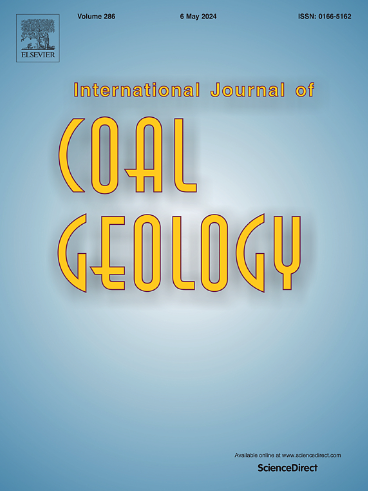Geochemical perspectives of the rare earth elements and yttrium in some Permian and Paleogene coals of India: A review
IF 5.7
2区 工程技术
Q2 ENERGY & FUELS
引用次数: 0
Abstract
The increasing demand and utilization of rare earth elements (REE or REY, if yttrium is included) in numerous sectors have led to the consideration of secondary resources for their recovery. The worldwide research has been focused on coal beds that may have potential recovery of REE or REY. Despite India's extensive coal reserves, the complex geochemistry of REE in its coalfields remains underexplored, with only a few basins being investigated. This paper reviews existing literature on the enrichment types, modes of occurrence, and anomalies of REE in Indian coal measures. Key findings indicate the presence of REY-bearing minerals such as xenotime, rhabdophane, mixed layer smectite/illite, etc., in Gondwana and Paleogene coals along with a high fractionation of LREE (light REE). Coals from Satupalli, Hura, Meghalaya, and Jharia show strong potential for the REY extraction. The Upper Continental Crust (UCC)-normalized REE patterns of the coal deposits illustrate variations in their distribution types. Satupalli coals exhibit an heavy-type distribution, Hura coals display light- and medium-type distribution patterns, Sohagpur coals show light-type pattern, while Assam coals have an heavy-type distribution pattern. The modes of occurrence of the REE in Indian coals are primarily influenced by the input of detrital minerals in erosional areas. The Paleogene coals have experienced marine-influenced environments; however, few of them exhibit distinctive depositional settings as well. Limited coal samples from Meghalaya and Raniganj show substantial REE enrichment. This study highlights the dissimilar characteristics in REE distribution patterns across India's coalfields, each with disparate geological settings, which need supplementary research work to establish their precise modes of occurrence and incorporation mechanisms into the peat depositional environment.
印度二叠系和古近系煤中稀土元素和钇的地球化学观点综述
许多部门对稀土元素(REE或REY,如果包括钇)的需求和利用不断增加,导致考虑利用二次资源进行回收。世界范围内的研究主要集中在有可能回收稀土或REY的煤层上。尽管印度拥有丰富的煤炭储量,但其煤田中复杂的稀土元素地球化学仍未得到充分勘探,仅对少数盆地进行了调查。本文综述了印度煤系稀土元素富集类型、赋存方式和异常的文献。重点发现冈瓦纳和古近系煤中存在含稀土矿物,如xenotime、rhabdophane、混层蒙脱石/伊利石等,且轻稀土(LREE)分馏较高。来自Satupalli, Hura, Meghalaya和Jharia的煤显示出很强的REY提取潜力。上大陆地壳(UCC)归一化模式显示了矿床稀土元素分布类型的变化。Satupalli煤为重型分布,Hura煤为轻、中型分布,Sohagpur煤为轻型分布,Assam煤为重型分布。印度煤中稀土元素的赋存方式主要受侵蚀区碎屑矿物输入的影响。古近系煤受海洋环境影响;然而,它们中很少有特别的沉积背景。梅加拉亚邦和拉尼甘杰的有限煤样显示出明显的稀土富集。该研究强调了印度煤田稀土元素分布模式的不同特征,每个煤田都具有不同的地质背景,需要进行补充研究工作,以确定其精确的赋存模式和与泥炭沉积环境的结合机制。
本文章由计算机程序翻译,如有差异,请以英文原文为准。
求助全文
约1分钟内获得全文
求助全文
来源期刊

International Journal of Coal Geology
工程技术-地球科学综合
CiteScore
11.00
自引率
14.30%
发文量
145
审稿时长
38 days
期刊介绍:
The International Journal of Coal Geology deals with fundamental and applied aspects of the geology and petrology of coal, oil/gas source rocks and shale gas resources. The journal aims to advance the exploration, exploitation and utilization of these resources, and to stimulate environmental awareness as well as advancement of engineering for effective resource management.
 求助内容:
求助内容: 应助结果提醒方式:
应助结果提醒方式:


